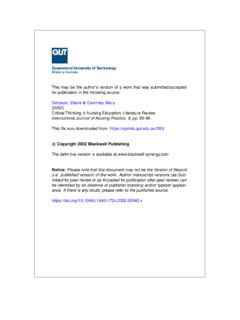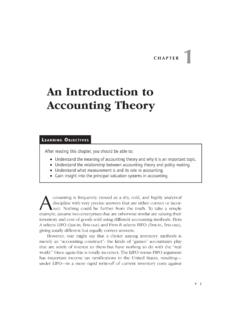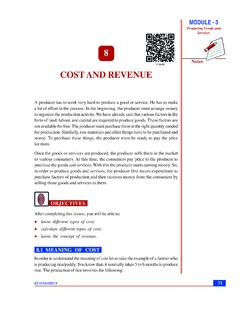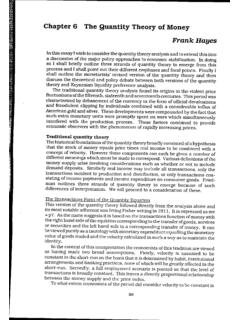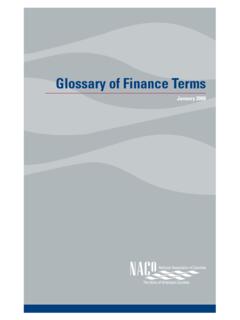Transcription of Amartya Sen: Development as Freedom - QUT
1 Amartya Sen: Development as Freedom 1 Terjesen, Siri (2004) Amartya Sen's Development as Freedom . Graduate Journal of Social Sciences 1(2):pp. 344-347. Copyright 2004 London School of Economics/Free University of Amsterdam Full title: Development as Freedom Author: Amartya Sen Publisher: Alfred A. Knopf Date: 1999 ISDN: 0-375-40169-0 Price: $26 Pages: 366 Review by: Siri Terjesen Amartya Kumar Sen received the Nobel Prize in Economics in 1998 for his collective contributions to the field of welfare economics. He is particularly recognized for empirical research on poverty, inequality, and the causes of famine and also for defining the field of Development studies to include technical analysis.
2 Most of his research focuses on South Asia and Africa. Development as Freedom is Amartya Sen s first book after receiving the Nobel and the most widely read of all of his works. Based on the author s World Bank Fellow Lectures in 1996, this descriptive, non-technical overview of welfare economics argues that Development should be viewed not in terms of economic measures ( GDP growth, average annual income) but in terms of the real freedoms that people can enjoy such as economic facilities and social opportunities. Sen describes human Freedom as both the primary end objective and the principle means of Development ; economic measures are merely the means to this end.
3 In March 2004, Sen published Rationality and Freedom , a 750 page highly technical treatise of complex mathematics and philosophy. In this first of two volumes, Sen explains the interdependent relationship between rationality and Freedom . Rationality is defined as the discipline of subjecting one's choices - of actions as well as of objectives, values and priorities - to reasoned scrutiny (4) rather than self-interest maximizing decisions. Freedom entails that an individual can make rational choices based on personal preferences and valuations. Amartya Kumar Sen was born in Bengal (then British India) in 1933 and grew up in Dhaka (now the capital of Bangladesh).
4 Following his Indian college-level education, Sen undertook postgraduate studies at Cambridge University, and followed an international academic teaching and research career in the UK, the US and India. He is the only Asian recipient of the Nobel Peace Prize in Economics. * * * Amartya Sen: Development as Freedom 2 Development as Freedom is an informal text that brings together multidisciplinary insights from politics, economics, ethics, economics, demography, and sociology. Sen frames Development as the realization of Freedom and the abolishment of unfreedoms such as poverty, famine, and lack of political rights.
5 Arguments are strongly supported with vivid accounts of real living and working conditions for men and women in developing communities in Asia and Africa. The book is best described as a model for examining issues of Development in both economic and political terms, and not as a formula for implementing change. For example, Sen writes of the need to enhance human capabilities by eliminating such unfreedoms as child labour and famine, but does not provide a structured roadmap of preventive measures and the long-term changes required for implementation. As such, Sen s treatise should be judged for how it creates awareness of Development issues.
6 Readers will be challenged to think of Development in political terms, but those probing the text for rigorous research or linkages to implementation will be disappointed. This review will briefly examine Sen s ideas around Development , Freedom and unfreedom, capability deprivation, women s Development , population growth, and shared humanity. Sen calls for a broadening of the term Development beyond the current narrow focus on economic measures such as per capita GDP and income levels. He argues that there is no direct link between a measure such as a country s GNP growth rate and the real freedoms that its citizens enjoy.
7 For example, countries like South Africa and Brazil have a higher per capita GNP but lower life expectancy when compared to Sri Lanka and China. Though recognizing the importance of economic benchmarks, Sen argues for the need for an expanded definition of Development to include real human freedoms such as political freedoms, economic facilities, social opportunities, transparency guarantees and protective security. This human Freedom is both the primary end objective and the principle means of Development . In tandem, Sen stresses the need to abolish unfreedoms such as poverty, famine, starvation, undernourishment, tyranny, poor economic opportunities, systematic social deprivation, neglect of public facilities, intolerance, and over-activity of repressive states.
8 Poverty is described as capability deprivation that limits an individual s realm of achievable functionings and combinations. Economic poverty and capability poverty are separated but linked, as seen in South Asia and Sub-Saharan Africa where people suffer from both dire economic poverty in the form of below subsistence earnings and capability poverty in the form of high infant mortality rates. Throughout the book, Sen highlights the key role of women in Development . Sen cites research indicating that women have hardier bodies and will survive better than men given symmetrical care.
9 For example, the female/male ratio in the developed world is as women tend to outlive men. Meanwhile, the developing world ratio is .94 in China and .93 in India. Sen believes that the world is missing as many as 100 million women due to female infanticide, neglect of female children, maternal mortality, and poor female healthcare. As there is a strong link between women s inequality and high Amartya Sen: Development as Freedom 3 mortality rates, Development hinges on women s earning power, economic role outside the family, literacy, education and property rights. Women s economic participation leads to enhanced status of women as well as long-term regional political and social change.
10 For example, the successful Grameen banking loan programme for rural Bangladeshi women has a 98% payback rate. This loan programme has greatly enabled regional economic empowerment, increased child survival and reduced fertility rates. In addressing the issue of population, Sen disagrees with Malthus 1798 essay describing how the number of men would soon exceed the amount of food they require. Sen believes that exponential population growth will be slowed by women s empowerment for reasons described earlier. He opposes China s one child family rule, arguing that such societal coercion is an unfreedom in itself and can result in violence, female infanticide, and unsteady birth rates.







